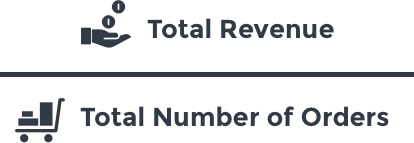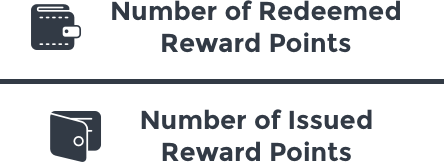While improving customer retention is a common priority for the majority of businesses, not all of them succeed in this field.
Keeping a customer happy and loyal for a long term is a serious task that includes working on various processes such as:
- monitoring and observations,
- the creation of accurate data collections,
- calculations based on processed information,
- and finally, constant improvements of strategies in different business aspects.
To successfully deal with all these activities, apart from well-developed knowledge base tools that will help you keep and classify the data, you are also going to need a reliable system of metrics for tracking customer retention.
Read on and find out what metrics you should rely on to get real-time information that will lead you to improved CR results.
Customer Churn Rate

Knowing your CCR will help you determine your customer lifetime value which can show you your business’ growth ability. Even though it may seem to you like something complicated, this rate is metric whose value grows every time a customer decides to bail on your business. Keeping this rate at the lowest level is something you should pay attention to, if you want your business to grow.
The higher your CCR is, the lower are chances for your business to blossom since you’ll be experiencing huge customer retention costs. Having this in mind, it’s obvious that CCR tracking is one of the key activities for any serious business. Analyzing and lowering CCR means having a larger number of loyal customers, and therefore, a higher customer retention rate. The decrease in CCR can be provoked in numerous ways, such as by:
- Meeting customers’ expectations
- Constantly adding value to your customers’ experience
- Differentiating from competition,
- Observing market trends and being responsive to them, etc.
Repeat Purchase Metrics
If you want to take your CRR to a higher level, you should seriously focus on this set of metrics. According to a research of shopping habits performed by Bain & Co,an average shopper’s fifth purchase is 40% larger than their first purchase – and this speaks a lot about the importance of observing changes in three main purchase rates. These are:
- Repeat Purchase Rate
Calculation: number of customers who have shopped more than once/number of customers - Purchase Frequency Rate
Calculation: number of orders/number of unique customers - Repeat Purchase Probability Rate
Calculation: (number of customers that purchased your product X how many times)/ total number of customers
All these metrics can be incredibly useful tools when realizing if you are bringing customers back to your store as much as you want. The most efficient yet relatively simple way of making these strongly related rates jump to a higher level is the personalization of your marketing efforts and strong incentives for repeated purchases. This means that your customers will be more likely to repeat a purchase more often, while also increasing the value of the purchase if you:
- personalize their experience on your website
- offer some benefits for repeated purchases
Finally, remember that 45% of online shoppers decide to repeat a purchase if a site offers personalized content.
Average Order Value

Apart from stimulating repeat purchases, if you want to run your business successfully, you shouldn’t overlook the amount of money spent by your customers in a single purchase. And this number is what Average Order Value represents.
The importance of knowing your AOV lies in the fact it helps you realize how worth your shoppers are. The more existing customers spend per transaction, the worthier they are, hence, you don’t have to put too much effort in engaging new customers. Accordingly, increasing AOV is a way more cost-efficient option than constant investments in the attraction of new customers.
The best way of increasing your AOV is to make sure your customers are aware of all the complementary products they can get when they purchase from you. You should make sure to let them know what product/services combinations can improve their experience with your product, while at the same time making sure you’re not too pushy in these cross-selling activities. You may want to:
- Have related products easily noticed on your website,
- Create product packages consisting of several complementary products,
- Create a public online knowledge base that will help your customers get to know more about your offer and products that may suit their needs
Redemption Rate

Basically, this rate is supposed to show you how interested your customers are in your loyalty programs. While you may constantly provide them with loyalty discounts, vouchers, and other types of additional value, not all of them will show interest in these programs.
Accordingly, this rate can strongly impact your customer retention. The lower it is, the lower are the chances of repeat purchases and long-term customers. To avoid this type of problem and work on your customer retention from this point of view, make sure that you offer high-quality loyalty programs that will actually attract attention and motivate your customers for real.
Don’t waste your time or energy on programs that are not interesting to your target audience. Instead, expand the list of ways for customers to get rewarded.
Loyal Customer Rate

Customer loyalty rate is calculated through Net Promoter Score (NPS) that is a key performance indicator introduced as a useful alternative to customer satisfaction survey. What’s more? It can predict and help to improve the business performance in future, when seen in correlation with the organic growth of a company.
Now, a repeat customer isn’t necessarily a loyal customer, and that’s what you learn from this rate. Analyzing the calculated rate you’ll be able to realize how many of your repeat customers are actually absolutely loyal to your brand.
A loyal customer won’t only buy your products but also spread the word about them and help you acquire new ones. Consequently, the increase in LCR will undeniably positively impact your likeliness of customer retention, so make sure to work on it by:
- Building trust by improving visibility, transparency, and customer support
- Relating to your customers and personalizing every possible aspect of your relationship with customers
Customer Lifetime Value

Combining customer value (AOV multiplied by purchase frequency) with store’s average lifespan (which represents the average time of customers’ activity before they drop off), CLV provides some important information. This rate lets you know:
- How much your customers spend as the time goes by
- How frequently they tend to buy your products
Accordingly, the increase in CLV positively affects the customer retention since it means that the frequency and value of purchases increase over time. If you want to improving customer retention from this aspect, some of the good ideas are:
- Making your brand more attractive and open to the target group
- Providing impeccable customer service based on fast responses and accurate information
- Having a responsive website with a well-developed mobile version, making it easily accessible
Customer Retention Rate

CRR is the ultimate rate that should be tracked constantly. It shows in a single number how all of the previously listed rates impact your customers’ retention. And NPS can help you achieve this objective without hindrance effectively.
This rate will show you how many customers choose to stay loyal to you in a long-term, so your work on improving customer retention rate will directly affect your customer retention. And if you’re asking yourself how you can increase this rate, you may want to think about:
- Introducing captivating loyalty and rewards programs
- Offering special discounts or free products after a number of repeated purchases
- Providing extraordinary customer service such as live chat support supported by online knowledge base tools
Successful Tracking and Improving Customer Retention
As you could see, each of the listed metrics shows you a different aspect of your relationship with customers. Quantifying customers’ experience and your business efforts will let you know more precisely how good your business looks in the eyes of your customers, and what you should improve.
To sum up, bringing customer retention to the highest level requires a set of metrics that you should calculate and improve continuously. These metrics are customer churn and redemption rate, as well as repeat purchase metrics and average order value. In addition, you shouldn’t forget about loyal customer rate, customer lifetime value, and retention rate.
By combining these metrics and spotting your business’ pain points, you’ll be able to define your customer retention goals and strategies more effectively. Therefore, you’ll keep your customers’ trust and loyalty while growing your business.








